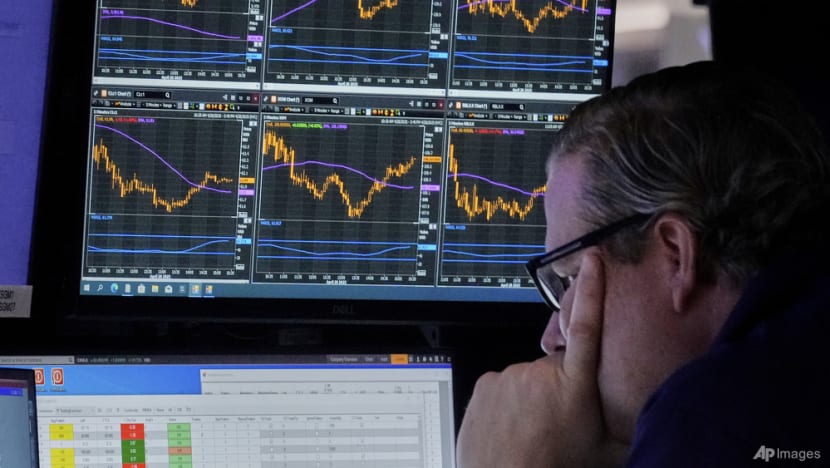Commentary: Buying the dip still works – even in this new world
Markets consistently reward those willing to deploy capital during periods of stress, says Marc Rubinstein for Bloomberg Opinion.

LONDON: Retail investors have won again. When trade tensions flared in early April and about US$6.6 trillion in market value vanished from US stocks in just two business days – the fifth-worst two-day drop since the S&P 500’s creation in 1957 – they didn’t panic.
Instead, they did what they’ve learned to do over the past 15 years: They bought the dip. Six weeks later, the US stocks benchmark has not only recovered but surpassed its pre-tariff levels, delivering a gain of about 17 per cent from the lows to those who kept their nerve.
Individual investors have become an increasingly powerful force in markets. At the end of 2024, they collectively held US$35 trillion in US stocks – 38 per cent of the market, according to US Federal Reserve and Goldman Sachs data.
And they’re not afraid to trade: They came into the year accounting for about 19.5 per cent of US equity-trading volume, according to Bloomberg Intelligence analyst Larry Tabb – up from 17 per cent a year prior and well above pre-pandemic levels.
While this is below the 24 per cent peak reached during the meme-stock frenzy at the beginning of 2021, commission-free trading has created a sustainably higher level of retail engagement.
POSITIVE OUTLOOK ON DIPS
When markets tumbled in early April, these retail investors sprang into action. At Charles Schwab, whose 37 million active brokerage accounts represent a significant slice of America’s retail investors, customers executed nearly 10 million trades per day in the first two weeks of the month, a 36 per cent jump from trading activity earlier in the year.
The firm additionally saw a surge in account openings. “We’ve seen in the first part of April, two to three times the level of new accounts being opened,” said Chief Executive Officer Rick Wurster on his earnings call. “We think there are some clients that want to get into Schwab and buy the dip.”
Robinhood Markets reported similar momentum with its equity trading volumes hitting four-year highs and options activity approaching record levels.
Rather than simply turning over their portfolios, though, retail investors were aggressively adding to their positions. According to JPMorgan, they net bought US$40 billion of stocks in April alone – setting a new record for the largest monthly inflow.
Analysis from Goldman Sachs, which tracks retail trading patterns through characteristics like sub-tick price improvement typical of payment-for-order flow trades, confirms this unprecedented buying activity, with two-week rolling net flows surpassing even the intense buying seen during the COVID-19 recovery.
A RELIABLE STRATEGY
Market history suggests buying dips has been a reliable strategy for retail investors. After the market decline of December 2018, the COVID-19 crash of 2020 and the inflation scare of 2022, markets consistently rewarded those willing to deploy capital during periods of stress. It works principally because it so often has.
As US Treasury Secretary Scott Bessent said in a speech at the Milken Institute Global Conference last week: "The entirety of our economic history can be distilled in just five words: ‘Up and to the right.’"
Historically, a perceived "Fed put" has underwritten the strategy, although what made this episode trickier to navigate is that the central bank was hamstrung by the administration's actions, and the administration, at least initially, didn’t seem focused on market reactions.
But with so much household wealth at stake, it eventually changed its stance, and the strategy once again delivered. This consistency, though, may have bred complacency about the risks.
WHEN BUYING THE DIP FAILS
The dot-com crash of 2000 shows how brutal markets can be when the pattern fails. As the selloff began, retail investors initially showed familiar resilience. E*Trade added accounts – almost a million through to the end of 2001 – as investors tried to catch what they thought were market bottoms.
But the approach failed catastrophically. “We’ve come through a highly speculative technology bubble,” Charles Schwab himself admitted in March 2001. “Maybe I should have been more emphatic about understanding that this was a temporary phenomenon.”
The Nasdaq would take 15 years to reclaim its previous highs, and the experience scarred retail investors for a generation – the Fed’s Survey of Consumer Finances shows the share of households directly owning stocks dropped from 21.3 per cent in 2001 to 13.8 per cent in 2013.
Yet here we are in 2025, and buying the dip has worked again. As investment strategist Ben Carlson notes, “One of the reasons American exceptionalism exists is because we always buy the dip – it’s ingrained in us that things will get better.”
The dot-com crash stands as the rare exception to what has otherwise been a remarkably successful strategy.
But therein lies the risk: With each successful dip bought, more capital and conviction flow into the strategy. The very reliability of the pattern may be quietly building its own vulnerability.
















